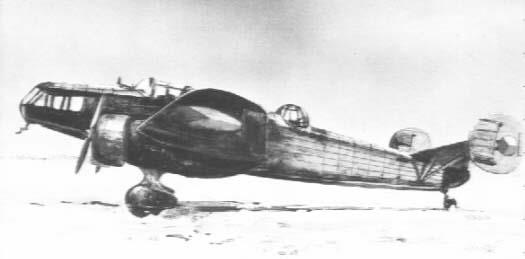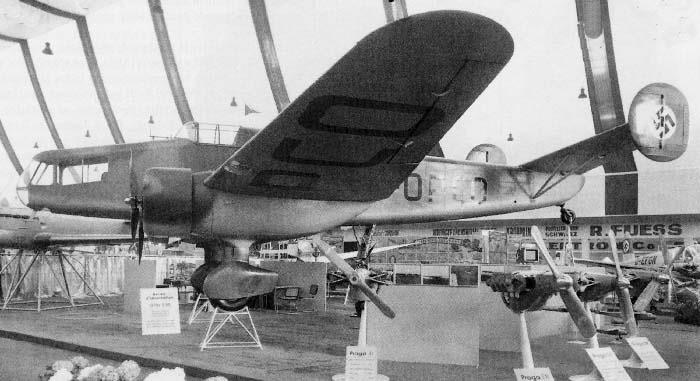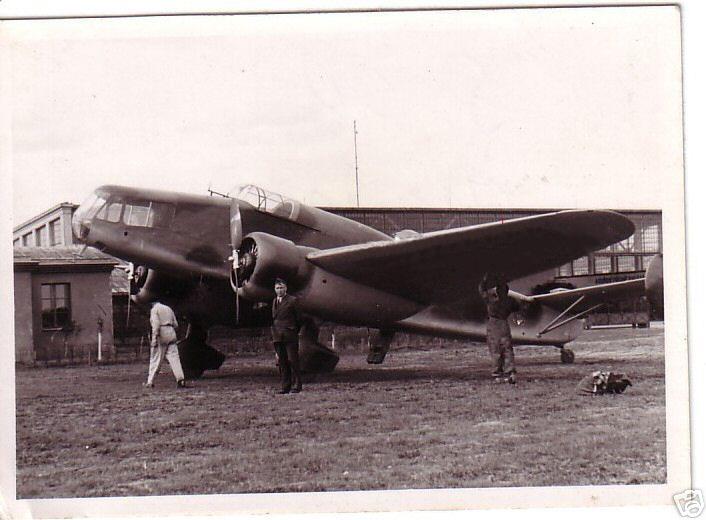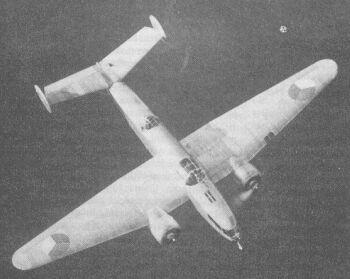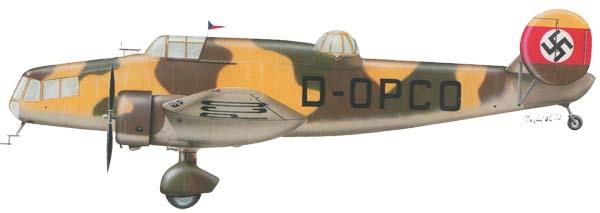| Type |
3-seat reconnaissance and light bomber |
| Engine |
2 Avia Rk-17 |
| Dimensions |
Length 12,60 m , height 4,70 m , span 17,30 m , wing area 43,0 m2 , |
| Weights |
Empty 2640 kg, loaded 4093 kg , max. take off weight |
| Performance |
Max.. speed 305 km/h , cruising speed 276 km/h, range 1200 km, endurance , service ceiling 7200 m , climb |
| Armament |
3 7.62-mm machine gun
Bomb load - up to 200 kg on six hardpoints |
| Type |
Werk.Nr |
Registration |
History |
|
|
D-OPCO |
|
Technical specifications for the aircraft classification Typ III (short-range reconnaissance with the functions of light bomber) was the basis for the creation of the three most successful Czechoslovak aircraft, created in the pre-war period. One such project was the S-50, the development of which was fought a group of engineers at Letov under the general supervision of Alois Shmolika.
From the submitted competitively aircraft S-50 looked the most old-fashioned. It was typical of the mid-1930s. all-metal low-wing monoplane and neubiramym chassis. Empennage completed two-keel, with relatively small in size vertical keels and rudders. Plumage, for greater rigidity, was supplied with braces.
The crew of the aircraft, consisting of three persons, housed in a fully enclosed cockpits. In the forward part of the fuselage, with improved glazing on the sides, equipped space navigator-bombardier. Behind it was the pilot's seat, and in the middle of the fuselage was located turret with driven, developed by Tatra. Vintomomtornaya group prototype consisted of two 9-cylinder engines Avia Rk-17 (420 hp) of domestic production with two-bladed fixed pitch screws, but production aircraft planned to install the French Gnome-Rhone 14M (515 hp) - with them the rate would be increased to 370 km \ h Small arms S-50 was a single 7.92-mm machine gun on the left wing and two 7.92-mm machine gun on the turret vz.30. Bomb load does not exceed 600 kg.
Shmolik projects simultaneously worked through the passenger version S-50D, and the training of S-52, but they remained in the form of preliminary drawings and sketches.
When it came to the immediate implementation in the metal, it was found unexpectedly that the firm Letov not have the required experience in the construction of all-metal aircraft. In order not to lose precious time decided to borrow experience from a competing firm Avia, which for several years has built metal aircraft. Meanwhile, at the Paris Air Show in 1937 showed a wooden mock-S-50 in full size. Much of an impression he made, but the judge allowed that Czechoslovakia is able to produce a very good aircraft. Just a prototype S-50 collected at the beginning of 1938 first flight was scheduled for March, but later it was moved to September. This aircraft first flew pilot Kovanda (Kovanda), which in November of the same year, was replaced by the pilot Yezek (Jezek). It was then replaced and painting S-50 - in the fall on the scout caused camouflage, similar to the fighter Avia B.35. It consisted of the rough spots of dark brown, light brown and green, the lower surface were stained blue. Flight data S-50 proved to be very mediocre - the speed of the prototype does not exceed 305 km \ h, to the same plane had no protection from the lower hemisphere, and the reservation of jobs crew was not provided. In connection with this order for series production company received Aero.
However, testing continued and were briefly interrupted in March 1939, in connection with the occupation of the country. When the Germans dealt with the purchased material part of S-50 aircraft assigned a civil registration code D-OPCO and painted the Czechoslovak markings. In summer, it demonstrated at the exhibition in Brussels and then transferred to the research center at Rechlin. The Germans were not particularly interested in the production of S-50, but they did not miss the opportunity to become fully familiar with the captured equipment. In 1940, in the course of the next test flight, the scout received serious injuries and was sent to the Letnany, which stood on the factory airfield a few more months. Since its renovation nobody was going to engage in S-50 made out of metal. The information that was released a small batch of scouts and some of them were transferred to Moravian government, is not true.


